adoption
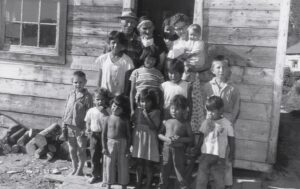
 The Sixties Scoop, often referred to simply as The Scoop, was a time when policies in Canada allowed child welfare authorities to remove Indigenous children from their families and communities to place them in foster homes. These children were then adopted by white families. Although it is called the Sixties Scoop, this practice started in the mid-to-late 1950s and continued until the 1980s. There was no given indication that these children were neglected or mistreated, just that they were Indigenous, and supposedly, therefore would be better off in the care of white families. During those years, an estimated 20,000 Indigenous children were removed from their families and placed predominantly with white middle-class families.
The Sixties Scoop, often referred to simply as The Scoop, was a time when policies in Canada allowed child welfare authorities to remove Indigenous children from their families and communities to place them in foster homes. These children were then adopted by white families. Although it is called the Sixties Scoop, this practice started in the mid-to-late 1950s and continued until the 1980s. There was no given indication that these children were neglected or mistreated, just that they were Indigenous, and supposedly, therefore would be better off in the care of white families. During those years, an estimated 20,000 Indigenous children were removed from their families and placed predominantly with white middle-class families.
The program’s policies were not uniform, with each province implementing distinct foster programs and adoption policies. Saskatchewan was unique in having the targeted Indigenous transracial adoption program known as the Adopt Indian Métis (AIM) Program. The term “Sixties Scoop” was first used in the early 1980s by social workers from the British Columbia Department of Social Welfare to describe the practice of child apprehension by their department. This term made its initial appearance in print in a 1983 report by the Canadian Council on Social Development, entitled “Native Children and the Child Welfare System.” Researcher Patrick Johnston cited the term’s origin and utilized it in his report. This term is akin to “Baby Scoop Era,” denoting the time from the late 1950s to the 1980s when many children were removed from unmarried mothers for adoption. These mothers were given no choice in the matter.
The government policies responsible for the Sixties Scoop were abandoned in the mid-1980s following resolutions passed by Ontario chiefs and severe condemnation from a Manitoba judicial inquiry. The inquiry, led by Associate Chief Judge Edwin C. Kimelman, culminated in the release of “No Quiet Place / Review Committee on Indian and Métis Adoptions and Placements,” commonly referred to as the “Kimelman Report.” Numerous lawsuits have been initiated in Canada by individuals who were part of the Sixties Scoop, including class-action suits in five provinces, such as the one initiated in British Columbia in 2011. Chief Marcia Brown Martel of the Beaverhouse First Nation was the lead plaintiff in the Ontario class-action suit filed in 2009. On February 14, 2017, Justice Edward Belobaba of the Ontario Superior Court found the government responsible for damages caused by the Sixties Scoop. Subsequently, on October 6, 2017, an $800-million settlement was disclosed for the Martel case. Currently, Métis and non-status First Nations individuals are not included in the settlement, prompting the National Indigenous Survivors of Child Welfare Network…an organization led by survivors of the Sixties Scoop in Ottawa…to call for the rejection of the settlement unless it encompasses all Indigenous individuals who were removed from their homes and placed into forced adoption.
The Sixties Scoop began during a period when Indigenous families were already grappling with the consequences of the Canadian Indian residential school system. This network of boarding schools for Indigenous peoples adversely affected their social, economic, and living conditions. The residential school system remained operational until the closure of the last school in 1996. Established by the federal government and managed by various churches, the system’s goal was to assimilate Aboriginal children by teaching them Euro-Canadian and Christian values. It enforced policies that prohibited the children from speaking their native languages, communicating with their families, or practicing their cultural traditions. Survivors of residential schools have spoken out about the physical, spiritual, sexual, and psychological abuse they endured from the staff. The enduring cultural impact on First Nations, Métis, and Inuit families and communities is both widespread and profound.
The Sixties Scoop involved the forced removal of children from their Indigenous lands and communities, often without the consent or knowledge of their families or tribes. Siblings were frequently separated and sent to different areas to prevent any communication with their relatives. These children were denied knowledge of their true nationality, history, or family ties. If a child sought to learn about their cultural identity, they required consent from their biological parents. However, due to the government’s efforts to sever ties between the children and their biological families, access to their birth records was impossible. Consequently, while the children might have suspected their cultural heritage, they had no means to verify it with concrete evidence.
The Canadian government began the process of closing the mandatory residential school system in the 1950s and 1960s, believing that Aboriginal children would receive a superior education within the public school system. A summary states: “This transition to provincial services led to a 1951 [Indian Act] amendment that enabled the province to provide services to Aboriginal people where none existed federally. Child protection was one of these areas. In 1951, twenty-nine Aboriginal children were in provincial care in British Columbia; by 1964, that number was 1,466. Aboriginal children, who had comprised only 1 percent of all children in care, came to make up just over 34 percent.”
The Truth and Reconciliation Commission (TRC) of Canada, established as part of the Indian Residential Schools Settlement Agreement, was tasked with recording the experiences of Indigenous children in residential schools. Its mission was to disseminate the truths of survivors, their families, communities, and all those impacted, to the Canadian populace. The TRC’s final report, released in 2015, details these findings: “By the end of the 1970s, the transfer of children from residential schools was nearly complete in Southern Canada, and the impact of the Sixties Scoop was in evidence across the country.” First Nations have persistently resisted such policies through various means, including legal challenges (Natural Parents v. Superintendent of Child Welfare, 1976, 60 D.L.R. 3rd 148 S.C.C) and the establishment of their own policies, like the Spallumcheen Indian Band’s by-law to manage its child welfare program, achieving varying levels of success.
In response to the loss of their children and the subsequent cultural genocide, First Nations communities took 
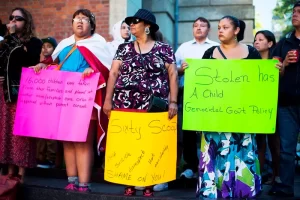 action by repatriating children from failed adoptions and striving to reclaim authority over their children’s welfare practices. This movement began in 1973 with the Blackfoot (Siksika) child welfare agreement in Alberta. Currently, there are approximately 125 First Nations Child and Family Service Agencies in Canada, operating under a variety of agreements that grant them authority from provincial governments to offer services, with funding provided by the federal government.
action by repatriating children from failed adoptions and striving to reclaim authority over their children’s welfare practices. This movement began in 1973 with the Blackfoot (Siksika) child welfare agreement in Alberta. Currently, there are approximately 125 First Nations Child and Family Service Agencies in Canada, operating under a variety of agreements that grant them authority from provincial governments to offer services, with funding provided by the federal government.
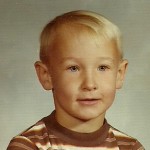
 When I began dating my future husband, Bob Schulenberg, I didn’t have a brother or even a nephew. I had one brother-in-law, but he and my sister, Cheryl Masterson didn’t live here, so he had no influence on my life. Bob’s brother, Ron was just 6 years old at that time, and very sweet. It was interesting to suddenly have a boy in my otherwise girl-bound life. I had four sisters and no brothers. Ron’s boy ways were curious to me. I grew up in a very girly household, and Ron was all boy…a bit of a shock to my system. Nevertheless, Ron was a happy little 6-year-old boy, who often got to go with his big brother and his brother’s girlfriend to places like Dairy Queen. He was a good little boy, and the three of us always had a great time. As the years went by, and Ron became my brother-in-law, he seemed like he had always been my little brother, and he had…at least for most of his life.
When I began dating my future husband, Bob Schulenberg, I didn’t have a brother or even a nephew. I had one brother-in-law, but he and my sister, Cheryl Masterson didn’t live here, so he had no influence on my life. Bob’s brother, Ron was just 6 years old at that time, and very sweet. It was interesting to suddenly have a boy in my otherwise girl-bound life. I had four sisters and no brothers. Ron’s boy ways were curious to me. I grew up in a very girly household, and Ron was all boy…a bit of a shock to my system. Nevertheless, Ron was a happy little 6-year-old boy, who often got to go with his big brother and his brother’s girlfriend to places like Dairy Queen. He was a good little boy, and the three of us always had a great time. As the years went by, and Ron became my brother-in-law, he seemed like he had always been my little brother, and he had…at least for most of his life.
Ron loved the same things his dad, my father-in-law, Walt Schulenberg and my husband did…mechanics, and like them, he was a natural. After his time in the Army, and then a recall for Desert Storm, Ron went to college for mechanics. He has been working on everything from big trucks to cars ever since. Ron is an excellent mechanic, and thankfully for my husband, Ron is very good at rebuilding transmissions. They sometimes have a “tag-team” way of repairing a transmission that Bob is working on. Bob takes it out, Ron rebuilds it, and Bob puts it back in. It works well for both of them. Of course, Ron is always working on vehicle is his own garage, where he has his own lift, as well as all the tools he could need to fix just about anything.
Ron has always tried to help people who need it. With the winter we have had, Ron has worked to help keep 
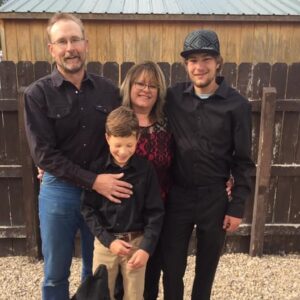 the roads cleared for the people out where he lives. The snow has been so deep, and people have needed the help. Ron is a good man, and people really appreciate him and his kindness. The past several years have been hard on Ron. He lost his wife, Rachel in early 2021. Ron has been working to rebuild life for himself and Rachel’s son Tucker, whom Ron adopted. He has also been there for Rachel’s other kids, Cassie and Riley, and their families. He is a good man. Today is Ron’s birthday. Happy birthday Ron!! Have a great day!! We love you!!
the roads cleared for the people out where he lives. The snow has been so deep, and people have needed the help. Ron is a good man, and people really appreciate him and his kindness. The past several years have been hard on Ron. He lost his wife, Rachel in early 2021. Ron has been working to rebuild life for himself and Rachel’s son Tucker, whom Ron adopted. He has also been there for Rachel’s other kids, Cassie and Riley, and their families. He is a good man. Today is Ron’s birthday. Happy birthday Ron!! Have a great day!! We love you!!

 The past year has been a difficult one for my brother-in-law, Ron Schulenberg. Following the death of his wife, Rachel, Ron found himself a single dad with a 13-year-old son. Being a single dad after having been married, while no different than being a single mother, is different in that the dad is used to being the main breadw-winner and not the nurturer of the children. To top it off, not only is he a single dad, but his son is grieving the loss of his mom. Becoming a single dad and having a grieving son is a lot to take on at one time, but Ron has handled it well. No, it hasn’t been easy, but his son, Tucker is his top priority, and he will do anything for him. It’s the mark of a great dad.
The past year has been a difficult one for my brother-in-law, Ron Schulenberg. Following the death of his wife, Rachel, Ron found himself a single dad with a 13-year-old son. Being a single dad after having been married, while no different than being a single mother, is different in that the dad is used to being the main breadw-winner and not the nurturer of the children. To top it off, not only is he a single dad, but his son is grieving the loss of his mom. Becoming a single dad and having a grieving son is a lot to take on at one time, but Ron has handled it well. No, it hasn’t been easy, but his son, Tucker is his top priority, and he will do anything for him. It’s the mark of a great dad.
Ron and Tucker have a lot in common. Even though there are years in between them, they like to do many of the same things. Tucker has wanted to do everything his Daddy was doing since he was two years old. That hasn’t changed. I have been very impressed to see Ron taking on all of the parent’s school responsibilities. So much of the time the “school stuff” falls to the mother, and often the dad feels out of place there. Nevertheless, whether he feels that way or not, Ron stepped up and while it may be outside of his comfort-zone, he is doing what he needs to do for his son. They have a great relationship, and Tucker really looks up to his to his dad. He has loved him since he was two, even before Ron legally adopted him. That was a great day for both of them. Tucker got the dad he needed, and Ron got the son he never had. Ron also got two great stepchildren, Cassie Franklin and Riley Birky; and three step-grandchildren, Lucas and Zoey Iverson, Jace Martin, and one on the way; (who Ron doesn’t think of as step at all). He feels very blessed, and they feel very blessed too.


Being a single parent is one of the hardest jobs in the world. It may not be all physical labor, but it is harder that many of the most rigorous physical labor jobs. Nevertheless, Tucker needs a parent who can do the things necessary to provide him a life of safety, security, and happiness. No one can promise no hardships, Ron and Tucker can attest to that, but Ron can doeverything in his power to make life happy for Tucker, and he does that quite well. Today is Ron’s birthday. Happy birthday Ron!! Have a great day!! We love you!!

 My nephew, Tucker Schulenberg has been through a number of big changes over the past year, not the least of which is a name change. This past summer found Tucker’s dream coming true, when his dad, Ron Schulenberg officially adopted him. It is something Tucker had wanted almost since the day his mom, Rachel Schulenberg married his new dad. They are best buddies. Tucker has looked up to Ron for years now, and carrying his name is the ultimate honor for both of them. We are all very happy for them all, because we have all wanted this as well. Now, Ron and Tucker work together and play together. Ron is a great role model for Tucker, and he is very, very proud of his son.
My nephew, Tucker Schulenberg has been through a number of big changes over the past year, not the least of which is a name change. This past summer found Tucker’s dream coming true, when his dad, Ron Schulenberg officially adopted him. It is something Tucker had wanted almost since the day his mom, Rachel Schulenberg married his new dad. They are best buddies. Tucker has looked up to Ron for years now, and carrying his name is the ultimate honor for both of them. We are all very happy for them all, because we have all wanted this as well. Now, Ron and Tucker work together and play together. Ron is a great role model for Tucker, and he is very, very proud of his son.
Tucker is in his first year of middle school now, and with that change has come some other changes…some his mother is almost dreading. The biggest “dread” for Rachel is girls!! Nevertheless, try as she might to avoid it, Tucker is a bit of a chick magnet. So far this year, Tucker has had four girlfriends. I guess that his love of girls is definitely in the early stages…nothing serious for Rachel to worry about. Tucker is a complex kind of guy, and that might be what attracts him to the girls. He is well liked at school, for several reasons. Tucker likes to share the wealth, so to speak. He shares gum…by the 6 pound bags…with the kids at school. It’s not just the gum that makes the kids all like him, however. Tucker hates bullying, and will not tolerate it, against himself or others. He stops it in its tracks. While Tucker isn’t one to pick a fight, he will fight it it’s necessary to stop bullying. That is something that makes us all very proud.

 Tucker likes LEGOs, YouTube, comics, the outdoors, shooting targets, and his dog. His varied interests, and his friendly nature, make him fit in everywhere. While his new interests make all the kids at school like him, Tucker still loves his daddy the best. They will always be best friends. Tucker is growing up fast, and I find myself amazed at how big he has grown. Where have all the years gone. It seems like just yesterday that Tucker was the almost 3 year old son of my brother-in-law’s new wife, but that was 9 years ago. Today is Tucker’s 12th birthday. Happy birthday Tucker!! Have a great day!! We love you!!
Tucker likes LEGOs, YouTube, comics, the outdoors, shooting targets, and his dog. His varied interests, and his friendly nature, make him fit in everywhere. While his new interests make all the kids at school like him, Tucker still loves his daddy the best. They will always be best friends. Tucker is growing up fast, and I find myself amazed at how big he has grown. Where have all the years gone. It seems like just yesterday that Tucker was the almost 3 year old son of my brother-in-law’s new wife, but that was 9 years ago. Today is Tucker’s 12th birthday. Happy birthday Tucker!! Have a great day!! We love you!!
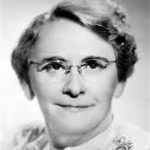
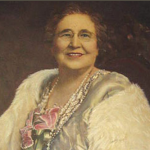 Unfortunately, not every life story is a perfect one. There are among us, who embrace evil, greed, and selfishness, as well as the need to promote themselves as far more important than they are, or ever should be allowed to be. Georgia Tann was purported to be the face of modern adoption practices. She supposedly changed the view of orphan children, from unworthy of better circumstances to simply victims of circumstance who could go on to greatness, if given the chance. She had the backing of many of the prominent members of Memphis society, and officials including Shelby County Juvenile Court Judge Camille Kelley. In reality, Tann operated a horrific human trafficking operation under the name of the Tennessee Children’s Home Society (not to be confused with the legally operated Tennessee Children’s Home) from 1924 to 1950. The non-profit corporation might have been legitimate when first chartered in 1897. Beulah George Tann was born in July 18, 1891, so she was too young to bring her evil into the society when it first began, and didn’t work there when the charter was renewed in 1913, but it was under her leadership that it became an illegal adoption agency.
Unfortunately, not every life story is a perfect one. There are among us, who embrace evil, greed, and selfishness, as well as the need to promote themselves as far more important than they are, or ever should be allowed to be. Georgia Tann was purported to be the face of modern adoption practices. She supposedly changed the view of orphan children, from unworthy of better circumstances to simply victims of circumstance who could go on to greatness, if given the chance. She had the backing of many of the prominent members of Memphis society, and officials including Shelby County Juvenile Court Judge Camille Kelley. In reality, Tann operated a horrific human trafficking operation under the name of the Tennessee Children’s Home Society (not to be confused with the legally operated Tennessee Children’s Home) from 1924 to 1950. The non-profit corporation might have been legitimate when first chartered in 1897. Beulah George Tann was born in July 18, 1891, so she was too young to bring her evil into the society when it first began, and didn’t work there when the charter was renewed in 1913, but it was under her leadership that it became an illegal adoption agency.
Tann preyed upon people who had lost their jobs due to the depression, as well as single mothers, telling them that she could help them by taking the children temporarily, until they could get back on their feet. When the parents tried to reclaim their children, they found out that they had been adopted. The parents tried to fight Tann in court, but the courts rules in favor of the Tennessee Children’s Home Society…but she didn’t stop there. She had her people take children off the streets, and even their own front porches. The children were listed as abused, neglected, or abandoned. Their names and birthdates were changed to make tracking difficult…records were routinely destroyed. She also had parents sign forms they did not understand when their babies were born, often while mothers were still under medication, saying that this would let the county pay for the birth. Parents were then told the babies had died. When their older children were taken away, they found out that they had also signed away the rights to their them too. There were many corrupt officials involved in this. The corruption ran deep, and everyone covered up for everyone else in the ring.



The problem the children faced after being removed from the protection of their parents, who love them; is that the people who take them do not value the heart, mind, and bodies of these children. The children kept there were routinely malnourished, beaten, imprisoned, and abused…in every sense of the word. They were not allowed to go to school, and they were taken to viewing parties so potential…rich parents could take the ones they liked. Tann took children from poor people and gave them to “high-types” of people…for a price, of course. The cost of the adoptions was high and there were additional fees is the child had to be transported to another state. Only the rich could afford them. Tann pocketed the lion’s share of the fees received, and she lived well, while the children often survived on cornmeal mush. It is estimated that over 500 children died in the group homes run by Georgia Tann. Some were buried in mass graves. The final resting place of many others is unknown.
Tann’s rich parents were victims too. They had unknowingly adopted children who shouldn’t have been up for adoption. If they found out what she had done, Tann blackmailed them into silence. Actress, Joan Crawford’s twin daughters Cathy and Cynthia were adopted through the agency. Actors, June Allyson and husband Dick Powell also used the Memphis-based home for adopting a child. Professional wrestler Ric Flair was stolen from his birth mother and placed for adoption. Auto racer Gene Tapia had a son stolen by the agency. A 1950 state investigation found that Tann had arranged for thousands of adoptions under questionable means. State investigators discovered that the Society was a front for a broad black market adoption ring, headed by Tann. They also found record irregularities and secret bank accounts. In some cases, Tann skimmed as much as 80 to 90% of the adoption fees when children were placed out of state. Officials found that Judge Camille Kelley had 
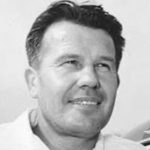 railroaded through hundreds of adoptions without following state laws. Kelley received payments from Tann for her assistance. Tann died in the fall of 1950, before the case could go to trial. Kelley announced that she would retire after 20 years on the bench. Kelley was not prosecuted for her role in the scandal and died in 1955. Over the years that Tann headed up the Tennessee Children’s Home Society, she amassed at least 5,000 victims. The true number will most likely never be known, and in reality, continues to grow with each generation of children born, who will never know their true heritage.
railroaded through hundreds of adoptions without following state laws. Kelley received payments from Tann for her assistance. Tann died in the fall of 1950, before the case could go to trial. Kelley announced that she would retire after 20 years on the bench. Kelley was not prosecuted for her role in the scandal and died in 1955. Over the years that Tann headed up the Tennessee Children’s Home Society, she amassed at least 5,000 victims. The true number will most likely never be known, and in reality, continues to grow with each generation of children born, who will never know their true heritage.
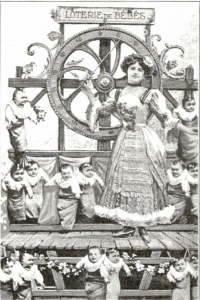 It sounds like something straight out of the annals of criminal behavior, but while it is strange, the authorities decided that it wasn’t illegal. Everyone knows that the adoption process, and the cost involved can make it almost impossible for many parents to adopt a child, but in late 1911, Parisians seeking to become parents could do things the regular way. Or they could take a more unusual option offered to them that year: A baby lottery. That’s right a baby lottery.
It sounds like something straight out of the annals of criminal behavior, but while it is strange, the authorities decided that it wasn’t illegal. Everyone knows that the adoption process, and the cost involved can make it almost impossible for many parents to adopt a child, but in late 1911, Parisians seeking to become parents could do things the regular way. Or they could take a more unusual option offered to them that year: A baby lottery. That’s right a baby lottery.
In January 1912, a foundling hospital, which was actually a children’s home, decided to hold “a raffle of live babies.” The hospital’s management check on the legalities and once they received the go-ahead, the plan went forward. The plan was two-fold. They wanted to find homes for these sweet abandoned babies, and they wanted to raise funds for the children’s home and other charitable institutions.
To protect the innocent babies, “An investigation of the winners was made, of course, to determine their desirability as foster parents.” By modern standards, this sort of thing feels bizarre and crazy, not to mention neglectful. But, as John F Ptak points out in his blog post about the lottery, “in comparison with some bitter early histories of the want of tenderness in the care of children, and keeping in mind the great leap forward in the creation of the foundling hospitals and what they represented in the face of not having anywhere for unwanted and impossible babies to go, the idea of the lottery for cute babies in 1912 doesn’t look so bad when placed in its historical context…With the terrible history of infanticide and exposure not too dimly removed from this time, the lottery seems far less horrible than its antiquarian components.” I would agree. While the idea was odd, it was similar to the Orphan Trains, with the exception of the background checks done on the parents wanting these babies.
It is an amazing thing when we look back on it, and most of us would be somewhat appalled, but for these  babies, it was a chance at a loving home, and it would appear that it worked very well…at least in that era. I don’t know how successful such a thing would be in this day and age. The dangers would very likely outweigh the good, and that is sad, because adoption is so expensive that many families remain childless. They just don’t have the money to go through a reputable agency, and anything else is a scary proposition. I would worry about they kinds of people who would try for something like this these days too. Most would be fine I’m sure, but there are a lot of crazy people out there too. I think the 1912 Paris Baby Lottery was an event of another era that will most likely never be seen again.
babies, it was a chance at a loving home, and it would appear that it worked very well…at least in that era. I don’t know how successful such a thing would be in this day and age. The dangers would very likely outweigh the good, and that is sad, because adoption is so expensive that many families remain childless. They just don’t have the money to go through a reputable agency, and anything else is a scary proposition. I would worry about they kinds of people who would try for something like this these days too. Most would be fine I’m sure, but there are a lot of crazy people out there too. I think the 1912 Paris Baby Lottery was an event of another era that will most likely never be seen again.

 Every child deserves to have two good parents. I know, in a perfect world, every child will get that set of good parents, but unfortunately, we don’t live in a perfect world. When my brother-in-law, Ron Schulenberg met his future wife, Rachel Franklin, she had a grown daughter and two sons, the youngest, Tucker was not yet 3 years old. Ron never had any children of his own. Unfortunately, Tucker’s dad was never able to really be a dad to him. He had his own issues and therefore, never really had time for Tucker.
Every child deserves to have two good parents. I know, in a perfect world, every child will get that set of good parents, but unfortunately, we don’t live in a perfect world. When my brother-in-law, Ron Schulenberg met his future wife, Rachel Franklin, she had a grown daughter and two sons, the youngest, Tucker was not yet 3 years old. Ron never had any children of his own. Unfortunately, Tucker’s dad was never able to really be a dad to him. He had his own issues and therefore, never really had time for Tucker.
Ron and Rachel were married on June 12, 2010, and while Rachel’s daughter, Cassie was married a week before Ron and Rachel, the two boys, Riley and Tucker would be living with Ron and Rachel. Riley had a relationship, such as it was, with his dad, and that continued to a degree. Still, Tucker did not have that. His dad couldn’t or wouldn’t really be there for him. Enter Tucker’s step-dad, Ron. Tucker and Ron did everything together. Ron was the role model Tucker needed, and the dad he had always wanted. They were inseparable, and before long a realization began to take shape in Tucker’s mind. Ron was his dad!! He didn’t want Ron to be just his step-dad. He wanted him to be his real dad!! So, Tucker asked if that could happen…if Ron would adopt him. Ron was so pleased, because that was what he wanted too.


There were road blocks to overcome, because Tucker’s dad was still around…somewhere. There was also the roadblock of getting him to terminate his rights legally, because he had already terminated his relationship in every way, but legally. We prayed for this to be taken care of, knowing that the only way it would be done was with God’s help. It all came together one day, when Rachel found out that her ex-husband was in Casper, and really needed a way to get back home. She headed down to the mission, but saw him waiting for a bus. She stopped and asked him to sign the papers. She would then buy him a ticket out of town, and he would be free of the child support that he wasn’t paying anyway. He took the deal, and they went straight to the court house. Ron signed paperwork stating that he wanted to adopt Tucker, and Tucker’s dad signed paperwork terminating his rights. Rachel signed paperwork agreeing to the transfer of parental rights from her ex-husband to Ron. Even Tucker got to sign paperwork stating his desire to be Ron’s son. That was the beginning of a wonderful journey. Today, after a 

 court hearing, that journey has come to an end, and a new journey begins. Today, Tucker is Ron’s legal son. Today Tucker is no longer the old Tucker, his legal name is Tucker William Schulenberg!! It’s a dream come true for him and his parents, Ron and Rachel Schulenberg. Tucker is right where he belongs. Tucker is Ron’s first child, and it’s a boy!! Congratulations to all three of you. Tucker, you are now a Schulenberg, and we are all very happy!!
court hearing, that journey has come to an end, and a new journey begins. Today, Tucker is Ron’s legal son. Today Tucker is no longer the old Tucker, his legal name is Tucker William Schulenberg!! It’s a dream come true for him and his parents, Ron and Rachel Schulenberg. Tucker is right where he belongs. Tucker is Ron’s first child, and it’s a boy!! Congratulations to all three of you. Tucker, you are now a Schulenberg, and we are all very happy!!


 My second cousin, Brian Schumacher and his wife, Lisa are two amazing people. Over the years of their marriage, they have been blessed with a beautiful group of children…but not in exactly the way you might expect. Brian’s first marriage, when he was 19 years old, gave him his first child…a daughter named Angie Marie was born January 8th, 1976, but that marriage ended in divorce. Brian married Lisa Basley on August 4, 1979. Their marriage was first blessed with a son, Brian Leslie born on February 8, 1980. Then, on May 20th, 1981 Lisa gave birth to another son, Nicholas Lee, and on June 29th, 1982, a daughter, Elizabeth Ann. Hemorrhaging during baby Elizabeth’s delivery brought with it the need for a hysterectomy for Lisa at age 29. She and Brian thought their days of having babies were over. They were quite sad about that because they had wanted more children, but God had a different plan for them.
My second cousin, Brian Schumacher and his wife, Lisa are two amazing people. Over the years of their marriage, they have been blessed with a beautiful group of children…but not in exactly the way you might expect. Brian’s first marriage, when he was 19 years old, gave him his first child…a daughter named Angie Marie was born January 8th, 1976, but that marriage ended in divorce. Brian married Lisa Basley on August 4, 1979. Their marriage was first blessed with a son, Brian Leslie born on February 8, 1980. Then, on May 20th, 1981 Lisa gave birth to another son, Nicholas Lee, and on June 29th, 1982, a daughter, Elizabeth Ann. Hemorrhaging during baby Elizabeth’s delivery brought with it the need for a hysterectomy for Lisa at age 29. She and Brian thought their days of having babies were over. They were quite sad about that because they had wanted more children, but God had a different plan for them.
Brian got saved in 1981, while working as a track layer on the railroad. A friend started telling him about Jesus and Brian became a “Jesus Freak” according to Lisa. At first Lisa was pretty uncomfortable with all that. She told him that if he didn’t stop telling everyone about Jesus, she was going to leave him. Once again, God had a different plan. One night in their bedroom Lisa awoke to a “bright light and a voice that sounded like Niagara Falls.” Jesus appeared to her and she kept saying take me with you. She knew that she wanted this Jesus in her life. Brian slept through the entire event, but Lisa was changed forever. She was no longer nervous about Brian talking to people about Jesus. She knew it was their calling. Still, in the back of their minds, the desire for more children continued to grow, and they would find out that God had a different plan for them again.
They checked into the possibility of adopting a baby in the 1990s, when their three children were under 10, and Angie was a teenager, but that was not God’s plan either, so they waited. Then, in God’s perfect timing, they got a call. It was 1992, and a friend said that she knew a girl that was pregnant and wanted to know if they were interested in adopting the baby. Brian and Lisa prayed about it and felt like God was telling them to do it. Their daughter, Grace Beverly was born August 11, 1993. Then, two years later, they got a call, saying that the 

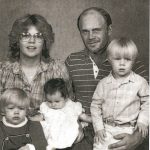 same girl was pregnant again. She offered Brian and Lisa that baby too. Their daughter, Angel Danell was born June 12, 1995. God’s plans never have mistakes in them. He wanted these two girls to have each other…and a great family. In 1996, God changed their lives again when their children’s cousin became pregnant, and couldn’t keep the baby at the time, and since she was enrolled in the tribe, family had the option to adopt first because the Native Americans prefer to keep a child close, but God made a way for Brian and Lisa, and their son Noah Richard was born August 4, 1997. At this point, Brian and Lisa thought their family was probably complete, but as they were learning, God had a different plan. A woman they met at their church had just come back from working in an orphanage in China. While there, she fell in love with a little girl called Precious. Brian and Lisa quickly fell in love too, and they felt that God was calling them to adopt Precious. Again, they would learn that God’s plans are sometimes different than ours. The adoption of Precious did not work out, but there was another child…a baby girl who needed a family. Brian and Lisa raised the $30,000 plus dollars to go to China and pick up that 6 month old baby. Their daughter Hope Elizabeth was born on September 23rd, 2001.
same girl was pregnant again. She offered Brian and Lisa that baby too. Their daughter, Angel Danell was born June 12, 1995. God’s plans never have mistakes in them. He wanted these two girls to have each other…and a great family. In 1996, God changed their lives again when their children’s cousin became pregnant, and couldn’t keep the baby at the time, and since she was enrolled in the tribe, family had the option to adopt first because the Native Americans prefer to keep a child close, but God made a way for Brian and Lisa, and their son Noah Richard was born August 4, 1997. At this point, Brian and Lisa thought their family was probably complete, but as they were learning, God had a different plan. A woman they met at their church had just come back from working in an orphanage in China. While there, she fell in love with a little girl called Precious. Brian and Lisa quickly fell in love too, and they felt that God was calling them to adopt Precious. Again, they would learn that God’s plans are sometimes different than ours. The adoption of Precious did not work out, but there was another child…a baby girl who needed a family. Brian and Lisa raised the $30,000 plus dollars to go to China and pick up that 6 month old baby. Their daughter Hope Elizabeth was born on September 23rd, 2001.
It was at this point that Brian and Lisa knew that their family was complete…at least until the grandchildren began to arrive. They marveled at the blessings God had given them. Their story doesn’t end here though. There were reasons that each of these precious adopted daughters were given their names. Grace received her name because they felt like, in a time just after Lisa’s dad’s passing God gave them Grace. Angel was just so sweet, they all kept calling her a little angel, and the name just stuck. Hope arrived at a time when Lisa felt like she had none and God gave her Hope to fill them all with Joy. As I was visiting with Brian and Lisa’s daughter, Elizabeth, in preparation for this story, she summed her parents up like this, “Pretty amazing…when I look back at what sacrifices that were made and the money, time, and love they have given all of us…well, God has been faithful to our family. If it weren’t for the color of our skin or eyes no one would know that were weren’t blood 
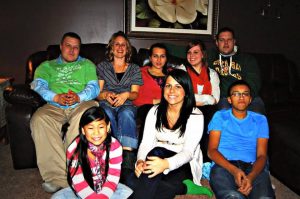 relatives. It’s like the adoption creed says that my parents have in their house ‘Not flesh of my flesh nor bone of my bone, but still miraculously my own. Never forget for a single minute, you didn’t grow from my heart, but in it.’ I like to brag on my parents because you won’t find a couple that has struggled more, had so many sleepless nights with their children trying to find their own and loving unconditionally and always keeping Jesus in the center.” That is such a beautiful tribute to a beautiful couple, from a loving daughter.
relatives. It’s like the adoption creed says that my parents have in their house ‘Not flesh of my flesh nor bone of my bone, but still miraculously my own. Never forget for a single minute, you didn’t grow from my heart, but in it.’ I like to brag on my parents because you won’t find a couple that has struggled more, had so many sleepless nights with their children trying to find their own and loving unconditionally and always keeping Jesus in the center.” That is such a beautiful tribute to a beautiful couple, from a loving daughter.

